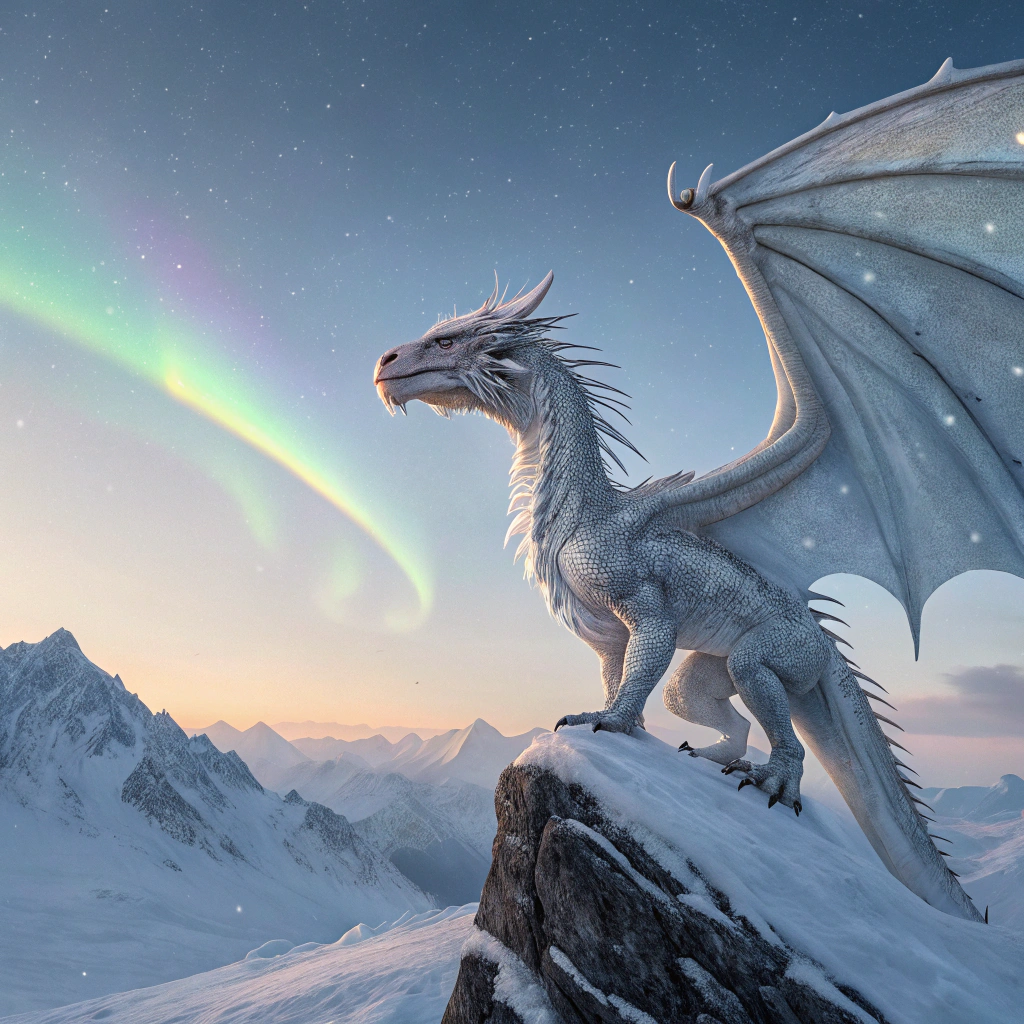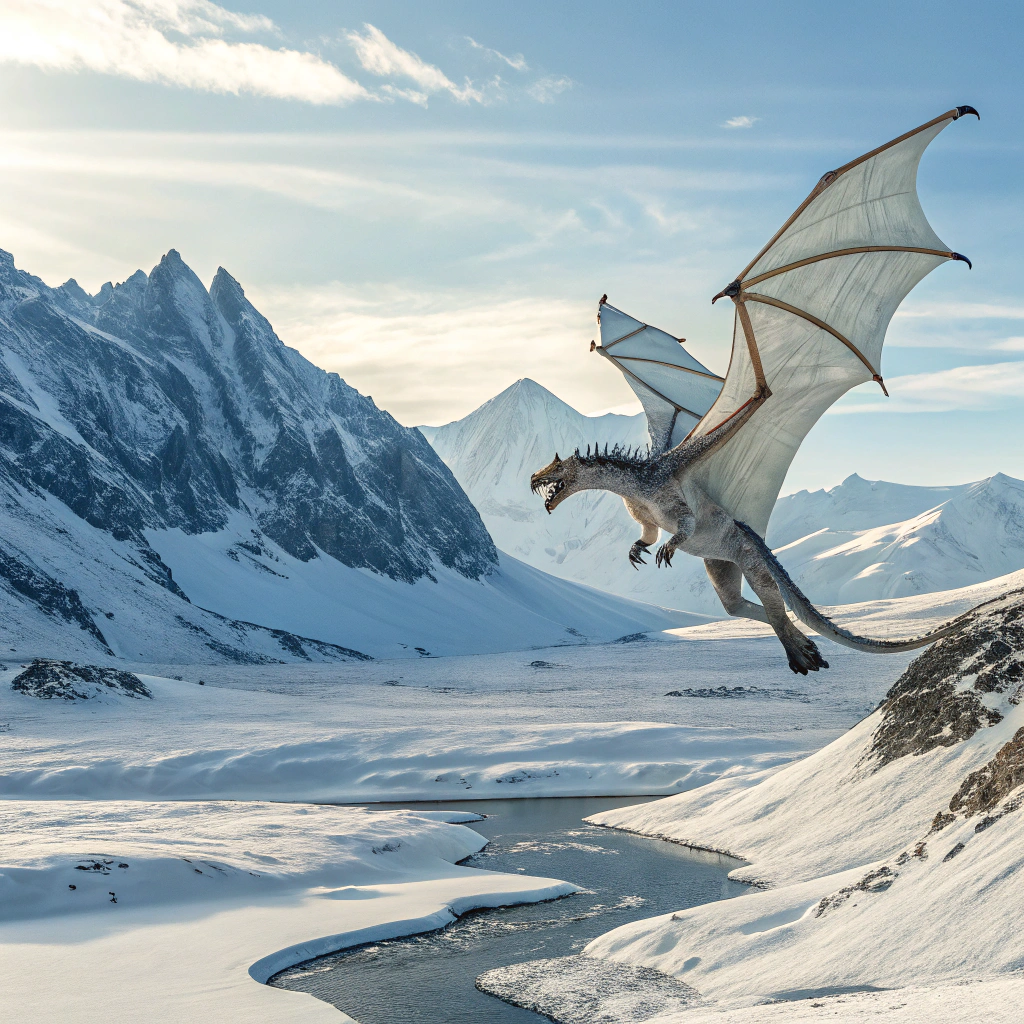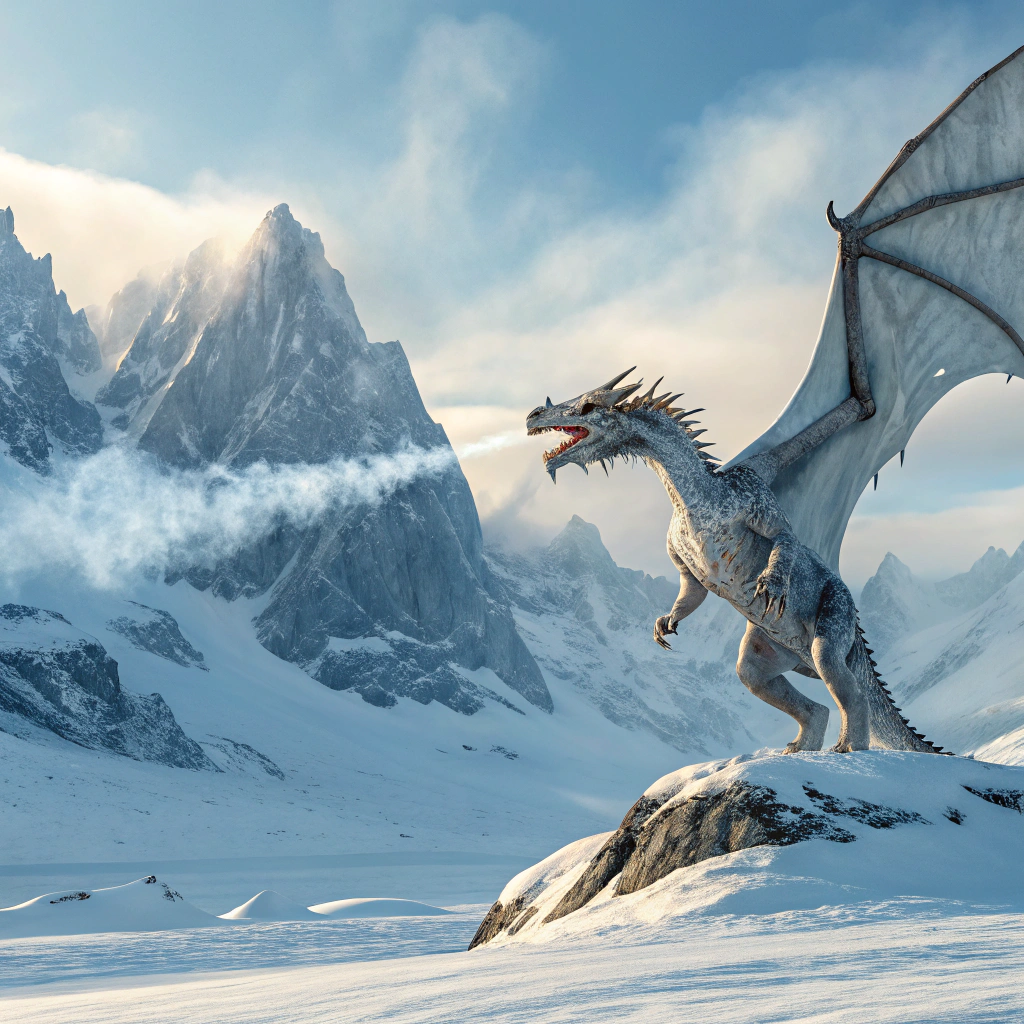
White Chromatic Dragon Name Generator
Name: Glacius
Meaning Origin Description Ice or Frozen Latin Reflects the dragon's icy nature and frost-breathing abilitiesName: Rimefrost
Meaning Origin Description Frozen Dew Norse Evokes images of crystalline ice formationsName: Khione
Meaning Origin Description Snow Goddess Greek Named after the Greek goddess of snowName: Cryos
Meaning Origin Description Cold One Greek References the dragon's freezing natureName: Nivalis
Meaning Origin Description Snowy Latin Describes the dragon's snow-white scalesWhite Chromatic Dragon Details
| Habitat | Arctic regions and freezing mountains |
| Breath weapon | Cone of cold |
| Usual alignment | Chaotic Evil |
The White Chromatic Dragon represents one of the most primitive and bestial specimens among dragon species. These creatures exhibit distinctly reptilian characteristics adapted for extreme cold environments, typically inhabiting arctic regions, high mountain peaks, and frozen tundras.
Physical Characteristics:
- Length: Adults reach 60-70 feet
- Distinctive ice-blue or pure white scales providing natural camouflage
- Muscular frame with streamlined body structure
- Sharp, serrated claws adapted for ice climbing
- Multiple rows of teeth specialized for tearing frozen prey
- Pronounced spikes along spine and tail
- Narrow, sleek head with pronounced forward-facing horns
Environmental Adaptations:
- Highly resistant to extreme cold temperatures
- Capable of burrowing through ice and snow
- Natural thermoregulation systems
- Enhanced night vision for dark arctic conditions
- Frost breath capable of flash-freezing objects and creatures
Behavioral Patterns:
- Territorial and solitary
- Hunts primarily large prey such as whales, seals, and polar bears
- Creates elaborate dens within glaciers or frozen mountains
- Displays minimal interest in communication or diplomacy
- Exhibits strong hoarding instincts focused on ice-preserved treasures
Intelligence Assessment:
- Lower cognitive functions compared to other chromatic dragons
- Operates primarily on instinct and basic survival drives
- Limited capacity for complex planning
- Basic problem-solving abilities focused on hunting and territory defense
Typical Alignment: Chaotic Evil
- Demonstrates aggressive territorial behavior
- Shows little regard for other creatures
- Acts primarily on predatory instincts
- Minimal interest in cooperation or alliances
Reproduction:
- Lays clutches of 4-6 eggs
- Eggs require extreme cold conditions to properly develop
- Minimal parental investment beyond initial nest protection
These dragons represent apex predators within their frozen domains, maintaining ecological influence through aggressive territorial control and predation patterns. Their presence significantly impacts local fauna populations and migratory patterns of arctic species.

